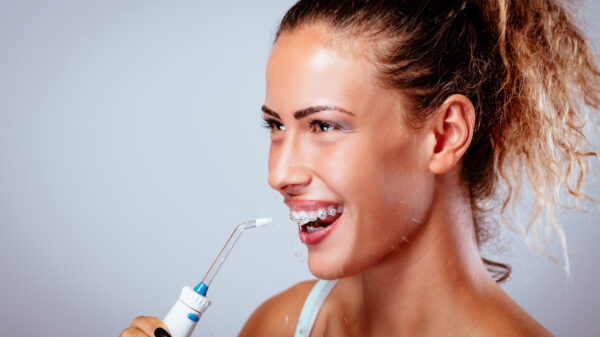Recovering from wisdom teeth removal can be a complex process for many individuals, especially those who lead an active lifestyle and are eager to maintain their physical fitness. One of the common inquiries among patients regards the possibility of exercising after surgery. Despite the misconception that patients should avoid all physical activities after oral surgery, there are indeed certain exercises that can be undertaken. However, it is crucial to firstly understand the doctor’s guidelines and the recovery timeline after surgery, as rushing into strenuous activities can cause complications such as increased pain, swelling, and a slower healing process. This paper will delve into the post-surgery care required after wisdom teeth removal, the possible side effects endured, and the gentle exercises that can be incorporated into your recovery routine without exacerbating any symptoms or delaying healing.
Understanding Post-Surgery Care
Heading: Caring for Your Loved One Post-Wisdom Teeth Removal: A Step-by-step Guide
We’ve all heard the stories, haven’t we? A family member or close friend goes in for a wisdom teeth removal, comes out silly from anesthesia, and then recovers pretty swiftly. Nevertheless, a certain degree of diligence comes into play when considering the aftercare post-surgery.
First things first, remember that everyone reacts to anesthesia and surgery differently. It might be a cakewalk for some people, while others could have a bit of a tough time. It’s important to show a little extra tender, loving care during this period!
Step 1: Pain Management
After anesthesia wears off, chances are there will be some discomfort or pain. Usually, dentists prescribe pain medication that’s to be taken on schedule. Keep track of these medications—it’s paramount to ensure the condition remains under control.
Step 2: Swelling and Bruising: It’s Normal!
A bit of swelling and bruising around the cheeks right after surgery is common. An effective method to bring down the swelling is to keep ice packs or a bag of frozen peas handy. Apply them to the cheeks and jaws intermittently.
Step 3: Adequate Rest and Recline
Encourage plenty of rest and ensure they stay in a reclined position when lying down. This helps to decrease both swelling and discomfort.
Step 4: Hydration is Key
Ensure they are hydrating well, but remember no straws for the first week. The sucking action can disrupt the healing process. Laid-back sipping from a cup should be the way to go!
Step 5: Bland but Nutritious Food
While soft and bland foods are the norm for the first couple of days, it’s also crucial to ensure the food is nutritious. Mashed potatoes, scrambled eggs, well-cooked pasta, and smoothies (no straw!) can be a real boon.
Step 6: The Dreaded Dry Socket
One thing to be keenly aware of when getting wisdom teeth removed is a condition known as a ‘dry socket’. This happens when the blood clot that typically forms after surgery is disturbed. Put plainly, avoid poking around the surgery sites and follow the dentist’s advice about oral hygiene.
Remember, post-operative days are not the time for a hectic schedule. It’s all about adequate rest, a healthy diet, and proper oral hygiene. It’s okay to lay low and let the body do its healing.
At the end of the day, remember to stay patient and kind. Recovering from anesthesia and surgery can have emotional side effects. Love, understanding, and a good rom-com are sometimes the best remedies!
Sure, wisdom teeth removal might not be a walk in the park, but with the right attention to detail, this too shall pass. Happy healing, all!

Identifying Suitable Exercises
Thriving, Not Just Surviving, After Wisdom Teeth Removal: Safe Exercise Options
Getting your wisdom teeth removed is a common yet significant event that most of us undergo. While pain management, controlling swelling, eating appropriate foods, and maintaining dental hygiene are the primary focuses, physical activity often gets overlooked. Exercise, according to many health professionals, is quintessential for a speedy recovery. So let’s delve deep into which exercises are not only safe but also beneficial after having wisdom teeth removed.
First and foremost, always consult with your oral surgeon or healthcare provider before you start any physical activity post-operation. The body’s healing process varies from person to person, and what might be beneficial for one could be detrimental for another. So, a personalized assessment is crucial before lacing up your trainers.
One exercise usually recommended after wisdom teeth removal is simple, low-intensity walks. Walks not only keep the blood circulation running smoothly but also help in easing the mind and lifting spirits. Besides, fresh air can work wonders for healing and rejuvenating the body. Start with 10-15 minute walks around your house or garden and gradually increase the time as your strength and comfort level improves.
Stretching is another beneficial activity for post-operative recovery. Gentle stretches, especially upper body stretches, can reduce stiffness that may build up due to prolonged bed rest. However, one must avoid any intense or inverted poses that could affect the affected area or increase blood flow to the face.
While many who routinely exercise may feel the urge to engage in intense workouts, it’s best to err on the side of caution. High-intensity exercises like weightlifting, running, or any exercise that increases heart rate dramatically should be avoided for at least a week or until your oral surgeon gives the go-ahead. These strenuous exercises can increase blood pressure, triggering bleeding and hampering healing.
Yoga can be a great way to gradually step back into vigorous exercise, provided it is practiced mindfully. Low-intensity yoga poses that focus on breathing and relaxation, rather than physical exertion, can be beneficial to both mental and physical health during recovery. Asana like ‘Shavasana’(Corpse Pose) or ‘Sukhasana’(Easy Pose) can aid relaxation without physical strain.
Recovering from wisdom teeth removal should be seen as an opportunity to focus on self-care. Making the transition from ‘patient’ to a fully healed individual can be made smoother with gentle exercises when guided by your healthcare provider’s advice. Remember— kindness and patience to oneself are as necessary as the recovery steps. The road to complete recovery may be a marathon, not a sprint, but it will guide you back to the routine you know and love, stronger and healthier than before.

Signs of Over Exertion
Recognizing Overexertion Signs after Wisdom Teeth Removal
Overdoing it physically after wisdom teeth removal can be detrimental to the healing process. It’s crucial to know what signs to watch out for to ensure you’re not working your body too hard, too soon.
The primary thing to look out for during a post-operative exercise regimen is the increase in pain or swelling. Suppose you’re experiencing tenderness, discomfort, or inflammation that seems unusual or excessive. In that case, it’s likely that the physical exertion is too much and could be delaying the healing process.
Avowed workout enthusiasts might be eager to get back into their usual fitness routines. However, for a few days after the surgery, any activity that could possibly strain the body, like heavy lifting or anything cardio-intensive, could disrupt the recovery process. If increased bleeding starts to occur during or post-workout, take it as a clear sign that the exercise intensity level needs to be dialed down.
Feeling fatigued or light-headed during or after exercise is a significant warning sign. While it’s beneficial to get moving to deliver oxygen and nutrients to your healing tissues, it’s essential to listen to your body. If you’re struggling with exhaustion or getting dizzy, give yourself permission to rest and recuperate.
In the days following wisdom teeth extraction, tasks you usually breeze through might become more challenging. If you’re having difficulty performing daily activities without feeling sluggish or drained, it might be a sign that you’re pushing yourself too hard during your exercises. The aim is to increase circulation and maintain flexibility, not to set new personal records.
Last but not least, another telltale sign of overdoing it is prolonged recovery. Meaning, if the healing progress seems slower than expected, your physical activities might be the reason. Make sure to maintain communication with your healthcare provider during this time. They can guide you appropriately about your physical activity levels and can even suggest alternative exercise plans conducive to your recovery.
Recovering from oral surgery, like wisdom teeth removal, is a balance of rest, proper nutrition, oral hygiene, and careful physical activity. The journey is about being kind to oneself and understanding that full recovery takes time and patience—having compassionate self-awareness and not rushing the process is fundamental.
It’s always important to remember that everyone heals at a different pace. What may work for one person may not work for another. By keeping an eye out for these signs, everyone can ensure their return to physical activity is done in the most beneficial and healthy way possible.

Seeking the balance between maintaining physical health and prioritizing healing after surgical procedures, such as wisdom teeth removal, is no small feat. Careful attention to the doctor’s guidelines and a thorough understanding of the recovery timeline is paramount to avoid any complications. Furthermore, identifying suitable gentle exercises can enhance overall well being without sacrificing the healing process. On the other hand, staying aware of signs of over-exertion like increased pain, swelling, or bleeding, is equally crucial. Overall, consulting with healthcare professionals, following the appropriate precautions, and listening to your body’s signals will allow for a smoother recovery, while also ensuring that your fitness goals are not completely sidelined.


















